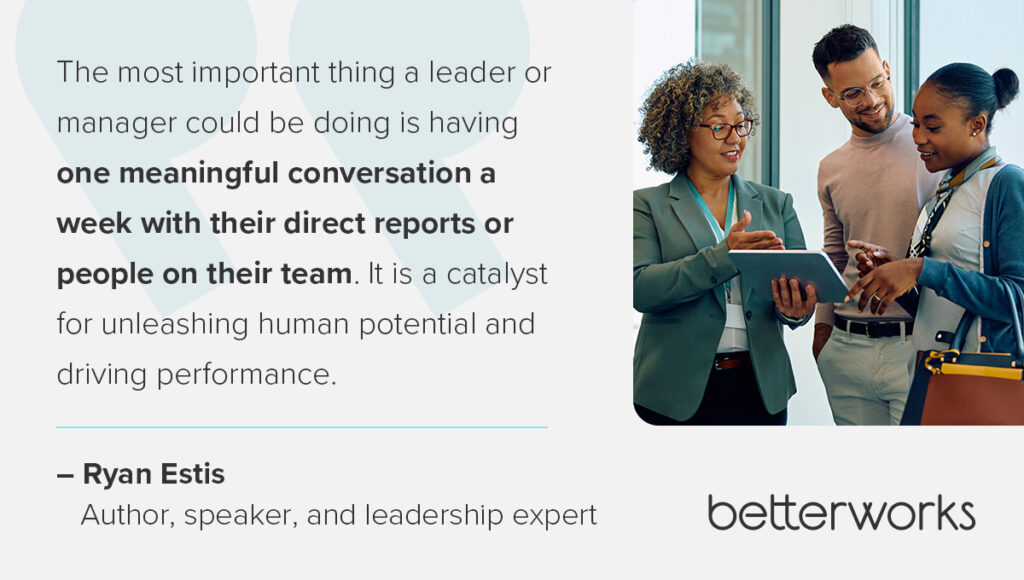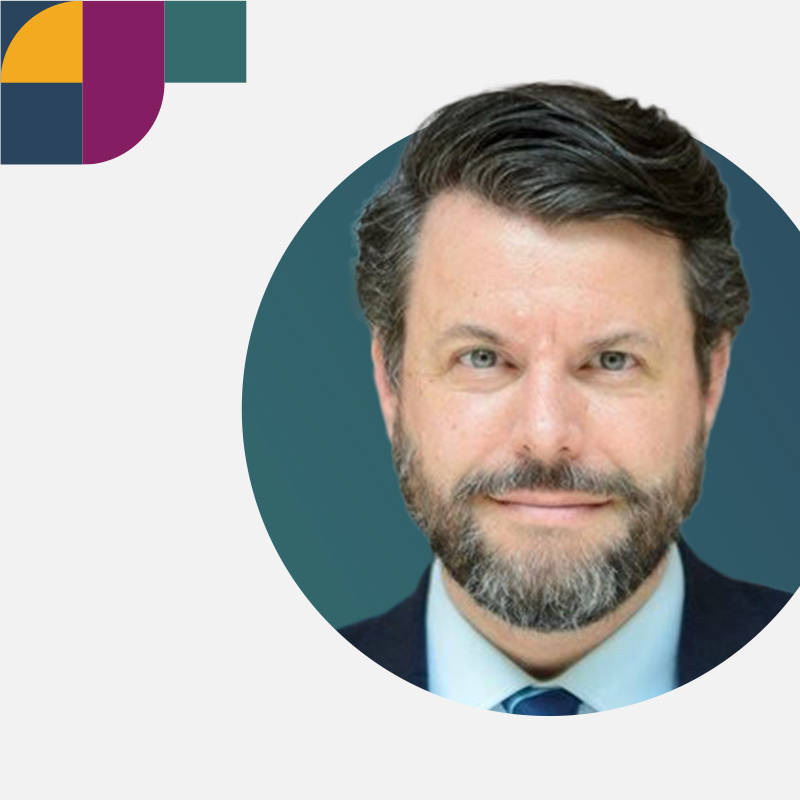Businesses today face constant change — fluctuations in their markets and the broader economy, new technology in the workplace, and the transformational effects of AI.
This widespread disruption is “putting pressure on organizations with respect to performance and profitable growth,” leadership expert Ryan Estis shared in his People Fundamentals webinar for Betterworks. “And so I think you’re seeing that play out, and that’s creating tension between what’s required to grow a business and the evolution and the needs and expectations of our people.”
Check out highlights from Ryan’s session to learn how to prioritize the well-being of your people while navigating change, or listen to them as part of our People Fundamentals podcast.
Subscribe wherever you listen to podcasts: Apple Podcasts | Spotify | YouTube Music
Re-engineer your relationship with your talent
We need more from our workforce than ever before. But we can’t continue expecting to improve productivity through transactional employee relationships.
“Collectively, as executives and HR leaders, we need to be re-engineering the way we’re thinking about our relationship with talent,” Ryan said, “and the way we approach organizing ourselves to accomplish meaningful results at work.”
Collaboration and teamwork are paramount for driving results, but they require building meaningful relationships with people across the organization. “Caring is really making the investment to get to know somebody — their hopes, dreams, desires — and not just as a resource or an asset, but as a whole person, and supporting that person at their place of highest need,” Ryan said.
Support a culture of growth
To create a people-focused culture that drives the business forward, you need to invest in employee growth and development. “High-potentials, top performers — they want to be invested in, they want to be developed, they want to be supported,” Ryan said. It’s up to leaders to demonstrate that the business values workforce development.
Leaders must set the tone for this culture of growth. Embrace change, seek opportunities for learning and development, and encourage others to do the same. When leaders model a growth mindset, they show that continuous improvement is valued and they empower employees to take risks, learn from failures, and embrace new challenges.
By aligning expectations and behaviors, HR leaders can create an environment that supports employee growth and development. “Creating clearly defined expectations specific to skill and competency,” Ryan said, “and then holding leaders accountable for modeling behavior is, I think, some of the most important work we can do inside HR.”
In its simplest form, a culture of growth relies on human interactions. “The most important thing a leader or manager could be doing is having one meaningful conversation a week with their direct reports or people on their team,” Ryan said. “It is a catalyst for unleashing human potential and driving performance. …That is the job. The job is to spend time investing, coaching, developing, and supporting your people.”

Refocus around human-centered metrics
You can’t drive long-term business results at the expense of your workforce. “You want momentum through harmony,” Ryan said. “You don’t want momentum by burning people out and causing them to suffer.”
For many organizations, this requires a mindset change — from short-term incentives and quarterly targets to a holistic and human-centered approach that supports long-term growth. “Our incentive structures need to change … We have to take a longer-range view of the business and get back to helping people be human again,” he said.
Evaluate the quality of your organization’s human experience, Ryan said. Look at not just performance metrics but also at employee well-being, work-life balance, and overall health and wellness. “If people are overwhelmed, exhausted, burned out, and they’re stressed and they’re anxious, and it’s affecting their relationships in their home life, we’re doing something wrong,” he said.
Think about organizational success in terms of how you’re supporting the workforce to engage with their work and produce better results. “Did you deliver a great human experience?” Ryan says. “Because that’s the human-centered metric.”
Want to learn more? Watch Ryan’s presentation on demand.
High Performance is Human-Centered


